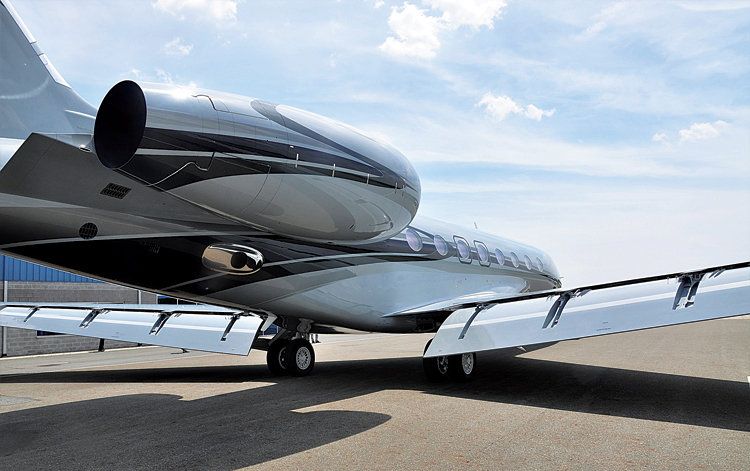Key Considerations for Pre-Owned Business Jet Transactions
Given the value of aircrafts and intricacies involved, buying or selling a business/private jet entails a complex interplay of technical expertise, regulatory compliance requirements, legal and tax considerations

India is witnessing a surge in demand for business/ private jets driven by its robust economic growth, rising number of High-Net-Worth Individuals (HNIs), increased demand by corporate houses seeking time efficient travel, and emergence of hobby flyers.
This trend is supported by projections that revenue in India’s general aviation market will reach to $268 million in this year. Although the estimated numbers are way less when compared to developed markets like the United States (where business aviation contributes a staggering $150 billion annually to the economy), this shows that India’s general aviation sector holds immense untapped potential.
As the infrastructure develops and regulatory framework evolves, the sector could become a significant contributor to the economy, mirroring trends observed in mature markets.
BUSINESS AVIATION TRANSACTIONS: A STRATEGIC APPROACH
Given the value of aircrafts and intricacies involved, buying or selling of a business/ private jet entails a complex interplay of technical expertise, regulatory compliance requirement, legal and tax considerations. The transactions become more complex when financing is involved from a financier outside India as compliance of Indian foreign exchange laws is also required under such transactions. Therefore, detailed attention to the Aircraft Purchase Agreement (APA) and other transaction documents is required while undertaking these transactions.
KEY CONSIDERATIONS IN THE AIRCRAFT PURCHASE AGREEMENT
This article provides insight on key aspects to be considered in the APA of a pre-owned business/private jet from buyer’s and seller’s perspective. A well-structured APA ensures a comprehensive, balanced agreement tailored to the needs and expectations of both parties, minimising risks and avoiding future disputes.

BUYER’S PERSPECTIVE
- Technical Acceptance: The buyer should conduct a comprehensive evaluation of the aircraft including a detailed review of its technical specifications and an inspection flight to confirm it meets its requirements and is in optimal condition. Any technical issues identified during the evaluation process are typically rectified by the seller to the buyer’s satisfaction prior to delivery of the aircraft. In case the seller fails to rectify identified technical issues within the agreed timeframe, the buyer should have a ‘walk-away’ right without any obligation or liability. The buyer should also have a right to reject the aircraft if it is not in the optimal condition.
- Delivery Conditions: The APA must clearly define the agreed-upon delivery condition of the aircraft. Key delivery conditions include no history of major damage or corrosion (unless specifically disclosed and accepted by the buyer), availability of subscription programmes, availability of all aircraft-related documents and past records including maintenance records, operational manuals etc.
- Title Diligence and Encumbrances: A detailed back-to-birth title verification of the aircraft must be conducted. In addition, it should be ensured that there are no encumbrances registered in relation to the aircraft with international registry (if applicable) or any other statutory authorities, no outstanding dues with airport authorities and no tax related liabilities. If the aircraft is registered with the Indian registry, an inspection with the Registrar of Companies should also be conducted to confirm any encumbrances created on the aircraft by the seller. A similar search should be carried out outside India (if the seller is outside India) as well with the relevant authority.
- Pre-Delivery Claims: All dues and liabilities related to the aircraft incurred prior to delivery to the buyer including airport landing and parking charges, fuel costs, and any notices from tax authorities, should be responsibility of the seller. It may be noted that such notices can surface even after delivery potentially disrupting the buyer’s ability to operate the aircraft. Therefore, it is essential that the APA explicitly addresses and allocates such obligation to the seller to avoid any post-delivery operational issues. Typically, indemnity is sought by the buyer from the seller to cover such claims.
- Risk of Loss: As a movable asset, if the aircraft is damaged or seized by government authorities prior to delivery, the buyer would be unable to take possession of the aircraft. In such cases, it is crucial that the buyer has the right to terminate the agreement and seek refund of consideration paid till the date of termination. In addition, APA should have a provision for claiming damages and reimbursement of cost incurred by the buyer (such as aircraft inspection cost and other out of pocket expenses) for purchasing the aircraft.
- Exclusivity: Until the transaction between the buyer and seller is ongoing, the seller should be restricted from engaging with any third parties for the sale of the aircraft. In addition, the seller should not fly the aircraft from the date of the letter of intent/APA (except for flights required to comply with DGCA requirements) till delivery of the aircraft.

SELLER’S PERSPECTIVE
- Risk and Title: The APA should clearly provide that risk as well as title in the aircraft passes on to the buyer upon delivery to ensure that the seller is not subject to any risk in relation to the aircraft post-delivery. In this regard, typically covenants are also included in APA for the buyer to apply to the Director General of Civil Aviation (DGCA) for transfer of ownership of the aircraft in its own name immediately upon delivery.
- Post Delivery Claims: The APA should explicitly state that the seller’s liability is limited to pre-delivery claims, while any claims arising post-delivery will be buyer’s responsibility.
- Money laundering: It is pertinent for the seller to ensure that the buyer is compliant with anti-money laundering and anti-corruption laws and funds received by the seller are not subject to violation of any such laws. Typically, representations are sought in this regard from the buyer in APA.
- Limitation of Liability: Given that the buyer carries out due diligence of the aircraft prior to purchase and is aware of the condition of the aircraft, the seller must consider capping its liability in case of claims which the buyer is eligible to raise. Nevertheless, claims in relation to defective title of the aircraft are usually not subject to limitation.
- Walk Away Rights: Given that the buyer carries out due diligence of the aircraft prior to purchase and is aware of the condition of the aircraft, except in case of any act or omission of the seller, the seller must ensure that the buyer should not have walk away right in other circumstances. Further, the seller should also have a walk away right in case the buyer is not able to close the transaction within agreed timelines or due to breach of APA by the buyer. The seller should have a right to seek damages from the buyer under such circumstances.
- Goods and Services Tax (GST): The seller should seek adequate information from the buyer and ensure the category under which buyer intends to register the aircraft with DGCA. This is important for the purposes of GST to be imposed in the bill of sale. In the event of a sale from non-scheduled operating permit (NSOP) seller to NSOP buyer, GST will be less in comparison to sale from a NSOP seller to a private category buyer. A covenant in this regard should be included in APA. In the event GST is levied on the seller due to registration of aircraft by the buyer in a different category, then any additional GST obligation should be on buyer’s account. This aspect is more relevant in case the transaction is a domestic transaction.
CONCLUSION
Navigating the complexities of an aircraft purchase/sale transaction requires careful consideration and detailed planning from both the buyer and the seller. By addressing these key points during APA negotiations, both parties can create a balanced, transparent agreement that protect their interest and ensure a smooth transaction.
The Authors are Partner and Senior Associate at Chandhiok & Mahajan





